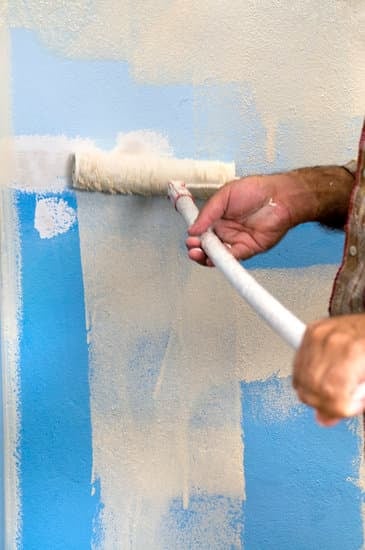Are you looking for practical ways on how to improve waste management at home? From reducing household waste to recycling and composting, there are plenty of steps you can take to create a greener and more sustainable home environment. In this article, we will explore the importance of proper waste management, different types of household waste, and provide practical tips for taking action towards a more eco-friendly lifestyle.
Proper waste management is crucial not only for the environment but also for the health and well-being of your family. Understanding the different types of household waste and knowing how to handle them responsibly is essential in creating a cleaner and safer living space. By implementing effective waste management practices at home, you can contribute to conserving natural resources, reducing pollution, and minimizing the impact on landfills.
In the following sections, we will delve into practical tips for reducing household waste, getting started with recycling, composting food scraps, reusing household items, and creating a customized waste management plan for your home. These simple yet effective strategies will help you make a positive impact on the environment while also saving money and resources. So let’s get started on our journey towards a greener and more sustainable home.
The Importance of Proper Waste Management
Proper waste management is essential for maintaining a clean and healthy home environment. By effectively managing household waste, individuals can reduce their carbon footprint, minimize pollution, and protect natural resources. Additionally, responsible waste management practices can help prevent the spread of diseases and create a safer living space for oneself and one’s family.
Reducing Environmental Impact
One of the key reasons why proper waste management is crucial is its impact on the environment. When waste is not disposed of or managed correctly, it can lead to air and water pollution, soil contamination, and harm to wildlife. By adopting proper waste management practices at home, such as recycling and composting, individuals can significantly reduce their environmental impact and contribute to a healthier planet.
Promoting Public Health
Improper disposal of household waste can pose serious health risks to individuals and communities. Accumulated waste can attract pests and vermin, leading to potential disease transmission. Moreover, toxic substances from improperly disposed items can contaminate soil and water sources, posing health hazards to humans. Therefore, by understanding how to improve waste management at home, individuals can play a critical role in safeguarding public health within their neighborhoods.
Conserving Natural Resources
Proper waste management also plays a vital role in conserving natural resources. By reducing, reusing, and recycling household items, individuals can decrease the demand for raw materials needed to produce new products. This helps conserve energy and natural resources while minimizing the negative environmental impacts associated with resource extraction and manufacturing processes. Through conscientious waste management efforts at home, individuals can contribute to sustainable resource use for both current and future generations.
Understanding Different Types of Household Waste
Non-Biodegradable Waste
Non-biodegradable waste refers to materials that do not break down or decompose easily in the environment. Examples of non-biodegradable waste include plastics, glass, metal, and certain types of chemicals. These items pose a significant threat to the environment if not disposed of properly.
Biodegradable Waste
On the other hand, biodegradable waste is composed of organic materials that can naturally decompose over time. This category includes food scraps, yard waste, paper products, and certain textiles. While biodegradable waste is more environmentally friendly than non-biodegradable waste, it still requires proper management to avoid negative impacts on the environment.
Hazardous Waste
Household hazardous waste consists of potentially harmful materials that require special handling and disposal methods to prevent contamination. Common examples of household hazardous waste include batteries, electronic devices, cleaning products, pesticides, and fluorescent light bulbs. It’s crucial to handle these items with care and dispose of them according to local regulations.
Properly understanding the different types of household waste is essential for effective waste management at home. By being aware of what constitutes each category of waste, individuals can take specific actions to reduce their environmental impact and contribute positively to a more sustainable future. Now let’s explore practical tips for reducing household waste.
Practical Tips for Reducing Household Waste
Reducing household waste is an important aspect of waste management at home. Not only does it contribute to a cleaner and healthier environment, but it also helps to minimize the strain on landfills and natural resources. Here are some practical tips for reducing household waste:
- Use reusable containers and bags: Instead of relying on single-use plastic bags and containers, opt for reusable options such as glass or stainless steel containers and durable cloth bags for shopping.
- Avoid disposable items: Whenever possible, choose products that are not designed for single use. This can include purchasing reusable water bottles, coffee cups, and utensils rather than using disposable ones.
- Shop in bulk: Buying in bulk often reduces packaging waste since larger quantities of products typically come with less individual packaging. Bring your own containers to stores that offer bulk options for items like grains, nuts, and spices.
Additionally, taking steps towards reducing food waste in the kitchen can significantly impact overall household waste production. Consider implementing strategies such as meal planning to prevent over-purchasing groceries that may eventually go to waste, utilizing leftovers creatively, and properly storing perishable items to extend their shelf life.
By incorporating these practical tips into daily routines, individuals can make a meaningful impact on reducing household waste. These small changes can add up to create a more sustainable and eco-friendly living environment within the home.
Recycling 101
Recycling is an essential part of waste management at home. It not only reduces the amount of waste that ends up in landfills but also conserves natural resources and reduces pollution. Here are some practical tips on how to get started with recycling at home:
1. Educate Yourself: Before you start recycling, it’s important to understand what can and cannot be recycled in your area. Different municipalities have different guidelines, so it’s essential to check with your local recycling center or waste management facility.
2. Set Up a Recycling Station: Designate a specific area in your home for collecting recyclables, such as paper, cardboard, glass, plastic, and metal. Make sure that this area is easily accessible and visible to encourage everyone in the household to participate.
3. Invest in Recycling Bins: Purchase separate bins for different types of recyclables or use color-coded bags to make sorting easier. Label each bin with the type of material it should contain to avoid confusion.
4. Practice Proper Sorting: Rinse out food containers and remove any non-recyclable materials before placing them in the designated bins. This will help prevent contamination and ensure that the items can be properly recycled.
By following these simple steps, you can kickstart your recycling journey at home and do your part in reducing waste and preserving the environment for future generations.
Composting
One of the first steps in starting a composting program at home is to understand what can and cannot be composted. Organic materials such as fruit and vegetable scraps, coffee grounds, eggshells, and yard waste are all suitable for composting. However, it’s important to avoid adding meat or dairy products, as these can attract pests and slow down the decomposition process.
To begin composting at home, you will need a designated area or bin for your compost pile. This can be as simple as a small space in your backyard or a specially designed compost bin. It’s also essential to regularly turn and aerate the compost to ensure proper decomposition and prevent unpleasant odors.
By following these simple guidelines and incorporating composting into your waste management plan at home, you can reduce your environmental impact while also producing valuable fertilizer for your garden. Whether you’re an experienced gardener or just starting out, composting is an accessible way to promote sustainability in your daily life.
The Benefits of Reusing and Repurposing Household Items
When it comes to waste management at home, reusing and repurposing household items can play a significant role in reducing the amount of waste that ends up in landfills. By finding new ways to use items that would otherwise be thrown away, you can not only minimize your environmental impact but also save money and get creative with DIY projects. Here are some practical tips for incorporating reuse and repurposing into your waste management routine.
One of the easiest ways to get started with reusing household items is to look for alternative uses for common products. For example, glass jars can be washed and used as storage containers for pantry items or as vases for flowers.
Old t-shirts can be repurposed into cleaning rags, and plastic containers can be used to organize small items in drawers or cabinets. By thinking outside the box, you can find numerous ways to give new life to items that might otherwise be discarded.
In addition to reducing waste, reusing and repurposing household items also helps conserve resources and reduce the demand for new products. When you give an item a second life, you are effectively extending its usefulness and preventing the need for new raw materials to be used in manufacturing. This means less energy consumption, reduced pollution from production processes, and overall lower environmental impact.
| Benefits of Reusing & Repurposing | Examples |
|---|---|
| Reduces waste sent to landfills | Using glass jars as storage containers |
| Conserves resources | Repurposing old t-shirts into cleaning rags |
Creating a Waste Management Plan for Your Home
One key aspect of creating a waste management plan for your home is to assess the types of waste that are being generated. Understanding the different categories of household waste, such as organic, recyclable, and non-recyclable materials, will help you determine the best methods for managing each type. For example, food scraps and yard waste can be composted, while glass, plastic, paper, and metal items should be sorted for recycling.
In addition to sorting waste into different categories, it’s important to establish a system for collection and disposal. This may involve setting up separate bins or containers for different types of waste, scheduling regular pick-ups or drop-offs for recycling and composting materials, and identifying local resources or facilities that accept specific types of household waste.
By creating a clear plan for how waste will be managed in your home, you can ensure that these practices become an integral part of your daily routine.
| Household Waste Category | Management Method |
|---|---|
| Organic (food scraps, yard waste) | Composting |
| Recyclable (glass, plastic, paper, metal) | Sorting for recycling |
| Non-Recyclable (plastic wrappers, styrofoam) | Scheduled pick-ups or drop-offs at local facilities |
Conclusion
In conclusion, adopting a more sustainable approach to waste management at home is essential for the well-being of our environment and future generations. By understanding the different types of household waste and implementing practical tips for reducing, recycling, and composting, we can make a significant impact on our carbon footprint. The importance of reusing and repurposing household items cannot be overstated, as it not only reduces waste but also promotes a more mindful consumption pattern.
One key takeaway from this article is the significance of creating a waste management plan for your home. This involves setting specific goals for waste reduction, implementing a system for proper recycling, and exploring alternatives such as composting. By taking the time to develop a plan tailored to your household’s needs, you can effectively contribute to a greener and more sustainable home environment.
Frequently Asked Questions
How Can Waste Management Be Improved?
Waste management can be improved by implementing better recycling programs, promoting composting, reducing single-use plastic consumption, increasing public awareness and education about waste reduction, and investing in innovative technologies for waste processing.
How Can We Ensure a Good Waste Management System at Home?
Ensuring a good waste management system at home involves setting up separate bins for different types of waste (e.g., recyclables, organic waste, general waste), committing to recycling and composting, reducing overall consumption, and supporting local recycling initiatives.
What Are 5 Things You Could Do at Home to Reduce Your Waste?
At home, you can reduce your waste by using reusable shopping bags and containers, buying products with minimal packaging or in bulk, composting food scraps, avoiding single-use plastics like straws and water bottles, and repairing items instead of throwing them away.

I’m thrilled to have you here as a part of the Remodeling Top community. This is where my journey as an architect and remodeling enthusiast intersects with your passion for transforming houses into dream homes.





